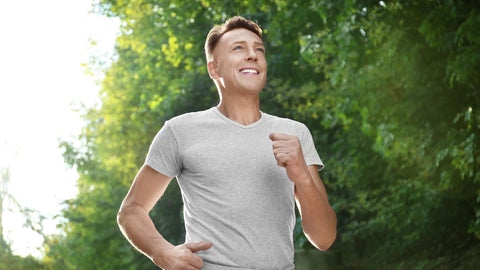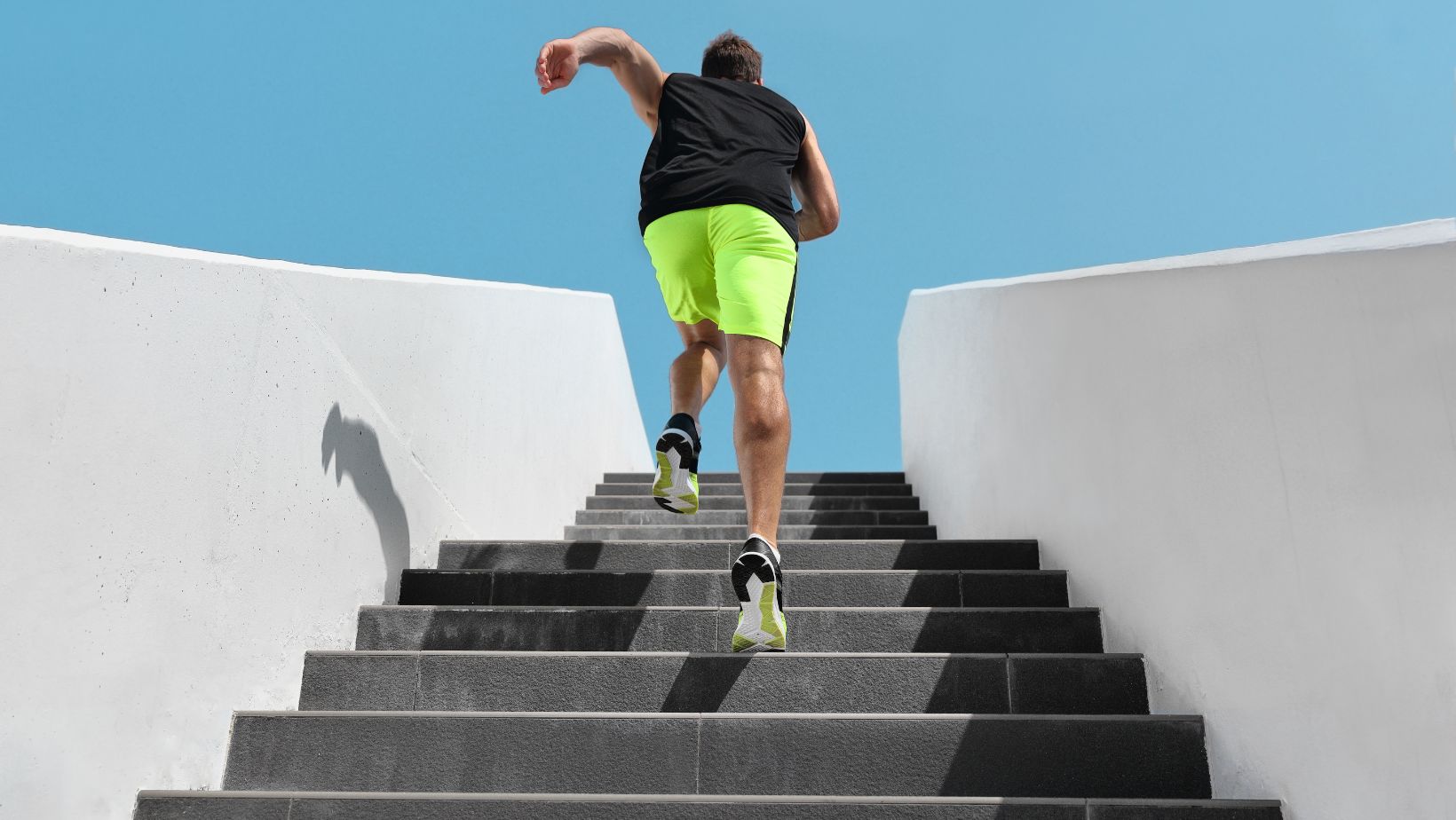Fasten your seatbelts because we're diving straight into the world of fasted cardio, no holds barred. We're breaking down the nitty-gritty of fasted cardio, and we're not pulling any punches.
Fasted Cardio Demystified
Fasted cardio isn't about mere hunger or having an empty stomach. It's about your body's inner workings and how it processes the food you feed it. We're not dancing around here. When you eat, your food breaks down into various molecules, entering your bloodstream for immediate use. This process triggers the release of insulin, the gatekeeper that ushers these molecules into cells.
But, hold on—when you're still digesting and absorbing your meal, your body's in a fed state, thanks to high insulin levels. It's only when your system wraps up the nutrient processing, insulin levels dropping to a minimum, that you hit a fasted state. The timing here depends on your meal's size and composition.
Larger, complex meals (think pizza) take their sweet time—five hours or more—to digest, maintaining elevated insulin levels. On the flip side, a simpler meal (like a scoop of whey protein isolate) can get you back to baseline insulin levels within hours. Carbohydrates play a similar role, with 35 grams of sugar keeping insulin levels above baseline for hours.
Your body dances between these fed and fasted states throughout the day. If you're truly looking for fasted cardio, you need to time it right, hitting that postabsorptive (fasted) state.
The Lowdown on Fasted Cardio Benefits
Let's cut to the chase on the perks of fasted workouts. We're not sugarcoating this—Bill Phillips, that former competitive bodybuilder, got people buzzing about fasted cardio back in the '90s. He swore by pre-breakfast workouts as the key to unlocking efficient fat burning. According to him, exercising on an empty stomach forced the body to tap into fat stores, no food to burn.
Fast forward to today, and we're talking lipolysis (fat cell breakdown) and fat oxidation (actual fat burning). Regardless of how you phrase it, the bottom line is clear: working out on an empty stomach means you're torching more fat for energy than if you'd eaten first.
The Insulin Factor
Here's where insulin enters the ring. Insulin isn't just about nutrient transport—it's also the fat breakdown roadblock. High insulin levels mean your body's less inclined to use fat for energy. It's simple logic: why burn fat when you've got a surplus of readily available food energy? Your body plays it safe, living off the meal energy and storing any excess as fat.
As your body processes your meal, insulin levels drop, signaling the transition to fat burning. Once the absorption is a done deal, your body's practically a fat-burning machine, relying on its own fat stores for energy.
Putting It to the Test: Fasted Cardio and Fat Burning

Research paints a vivid picture: fasted cardio hikes up fat oxidation. In other words, cardio in a fasted state cranks up the fat-burning furnace. But here's where it gets real—the calories you burn during a workout only scratch the surface of your daily energy expenditure. The real deal, the game-changer for fat loss, comes down to your total daily energy expenditure (TDEE), assuming your calorie intake stays consistent.
Now, brace yourself—burning extra fat during your morning cardio might mean burning less fat later in the day. It's a tricky equation, but here's the scoop.
Fast Facts: Fasted Cardio vs. Fed Cardio
Research from the University of Padua rings a bell: fasted runners burn more fat and fewer carbs during the workout, but the tables turn afterward. Those who ate before their run scored more carbs burned post-workout. The final score? Both groups torch the same amount of carbs and fat by the day's end. Fasted cardio doesn't have a winning edge over its fed counterpart. Lehman College echoes the same results.
Why the seesaw? Your body has a specific pecking order for energy use during exercise:
- Blood glucose
- Stored carbs (muscle glycogen)
- Stored fat
- Stored protein (muscle)
When carbs are on standby, your body goes for them over fat stores. When carbs run low, fat takes center stage. So, while fasted cardio cranks up fat burning during exercise, it messes with your fat-burning mojo later in the day.
Here's the kicker: the fat you burn during fasted cardio isn't necessarily the jiggly stuff you want to shed—it's often the fat stashed in your muscle cells. Plus, the fitter you are, the more your body taps into these muscle fat stores instead of targeting the stubborn belly fat.
So, does fasted cardio alone win the fat-burning title? The answer: not exactly. But there's a twist when you pair it with the right supplements. And that's where we're heading next.
Fasted Cardio and Calorie Burn
Let's get straight to the point: fasted cardio doesn't crank up the calorie-burning furnace compared to fed cardio. The University of Tsukuba in Japan proved it. They had a dozen young, male endurance athletes in the lab, splitting them into two groups:
- One hour of indoor cycling after breakfast (fed cardio)
- One hour of the same workout before breakfast (fasted cardio)
They kept these subjects under lock and key for three days, tracking their food intake, energy burn, and fat loss. The bottom line? No difference in 24-hour energy expenditure between the two groups.
So, put simply, fasted cardio, by itself, isn't the ticket to accelerated fat loss. But here's the kicker: when you combine it with the right supplements like Shred Fat Burner, you unlock the fast track to shedding stubborn fat.
Cracking the Stubborn Fat Code
Ladies, let's talk about those hips, thighs, and butt—the stubborn fat trifecta. Gentlemen, we've got your lower abs, love handles, and lower back in the hot seat. It's not a genetic hex; it's a biological defense mechanism. And guess what? Fasted cardio's your secret weapon to break through.
Time for some biology: your body relies on catecholamines to kick start fat burning. These chemicals travel through your bloodstream, latching onto fat cell receptors, releasing stored energy for use. Fat cells come in two flavors: alpha and beta receptors. Simplified, beta-receptors speed up fat mobilization, while alpha receptors put on the brakes.
Here's the kicker—stubborn fat zones boast more alpha-receptors than beta ones. Areas that shed fat faster? You guessed it, plenty of beta-receptors, fewer alpha. Blood flow plays its part too. Ever noticed how lower back and thigh fat feels cooler to the touch? Blame it on reduced blood flow, which means fewer catecholamines reaching the fat cells, slowing fat loss.
Fasted cardio rides to the rescue. In a fasted state, blood flow surges around the abdomen, giving catecholamines a free pass to tackle stubborn fat. In theory, this means you're primed for more stubborn fat mobilization.
Keep it real, though—studies haven't delivered the knockout punch on this theory yet. But here's where it gets exciting: meet yohimbine.
Enter Yohimbine: Your Secret Weapon
Yohimbine, derived from the Pausinystalia yohimbe plant, is the ace up your sleeve. Research has shown that yohimbine puts your fat loss in overdrive. It jumpstarts catecholamine production, ramping up your basal metabolic rate and taming your appetite.
Take a page from Université Paul Sabatier's book. In one study, participants mobilized twice as much fat after an overnight fast when they took yohimbine compared to eating breakfast. And the magic didn't stop there. The same study reported a 150% fat mobilization boost when yohimbine joined forces with 30 minutes of moderate-intensity exercise.
Here's the nitty-gritty: yohimbine doesn't stop at just melting fat. It's your go-to for dealing with stubborn fat stores. It locks onto alpha receptors, hindering their fat-capturing power, making beta-receptors the star of the show. The result? More fat loss.
Studies haven't slapped a "stubborn fat hero" label on yohimbine just yet, but the evidence is stacking up. Serbian elite soccer players dropped a solid five pounds of fat in a 3-week study. The kicker? They started at around 9% body fat, which means they had to target those stubborn lower-torso fat zones.
So, here's the deal—if you're on a mission to annihilate stubborn fat, combine yohimbine and fasted cardio. No sugar-coating, just results. Say goodbye to fads and hello to results-driven fat loss.
Fasted Weightlifting: The Heavy-Hitting Question
Now, let's get to the heart of it—fasted weightlifting. Brace yourself for a reality check: fasted weight lifting can stir things up, but you might feel the heat. We're not sugarcoating this. You might experience a noticeable dip in strength during those initial weeks of transitioning from fed to fasted workouts.
It's not about muscle loss, it's all about carbs. Eating carbs before a workout boosts your gym performance. Taking them away can be a game-changer, and not necessarily in a good way. Your performance might take a nosedive.
But, here's the deal—everyone's different. You need to feel it for yourself. If fasted weightlifting doesn't pull the rug out from under you, it's your ticket to fat-burning glory.
Listen to your body, folks. If you don't feel the slump and your strength stays solid, go for those fasted weightlifting sessions. But if you're barely keeping your head above water, stick to the fed sessions.
The Takeaway: We Cut to the Chase

Fasten your seatbelts, because fasted cardio is no joke. It's about your body's fat-burning secrets. You don't have to play by the rules—fasted cardio, combined with the right supplements, is your path to crushing stubborn fat. And yes, you can even throw in fasted weightlifting for an extra punch.
Don't settle for less; go for the gold. It's time to take control of your fat loss journey. Say goodbye to the fluff and hello to serious results.






